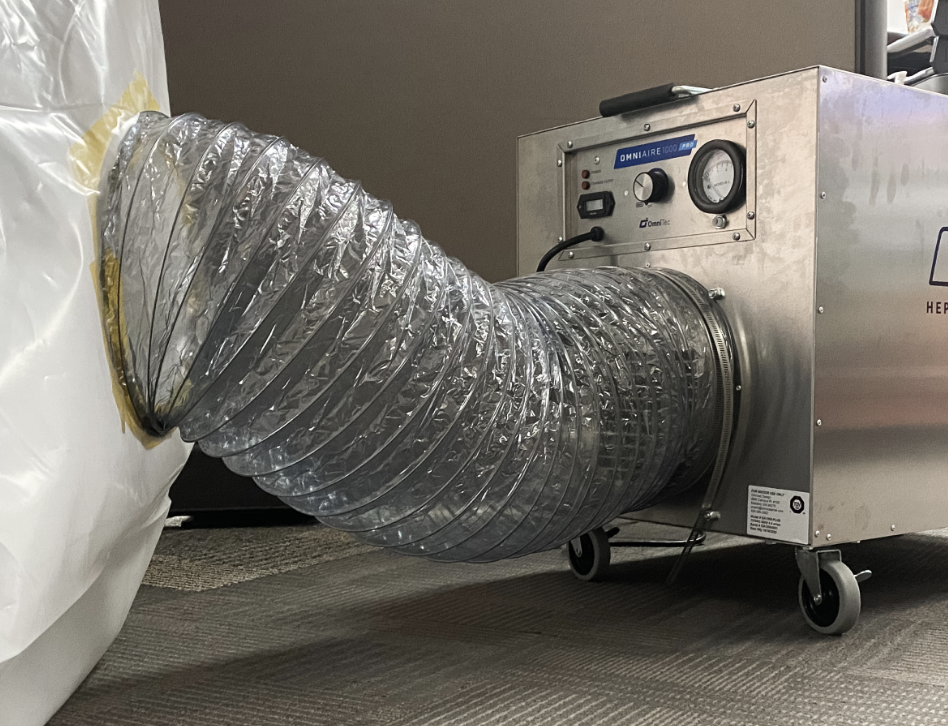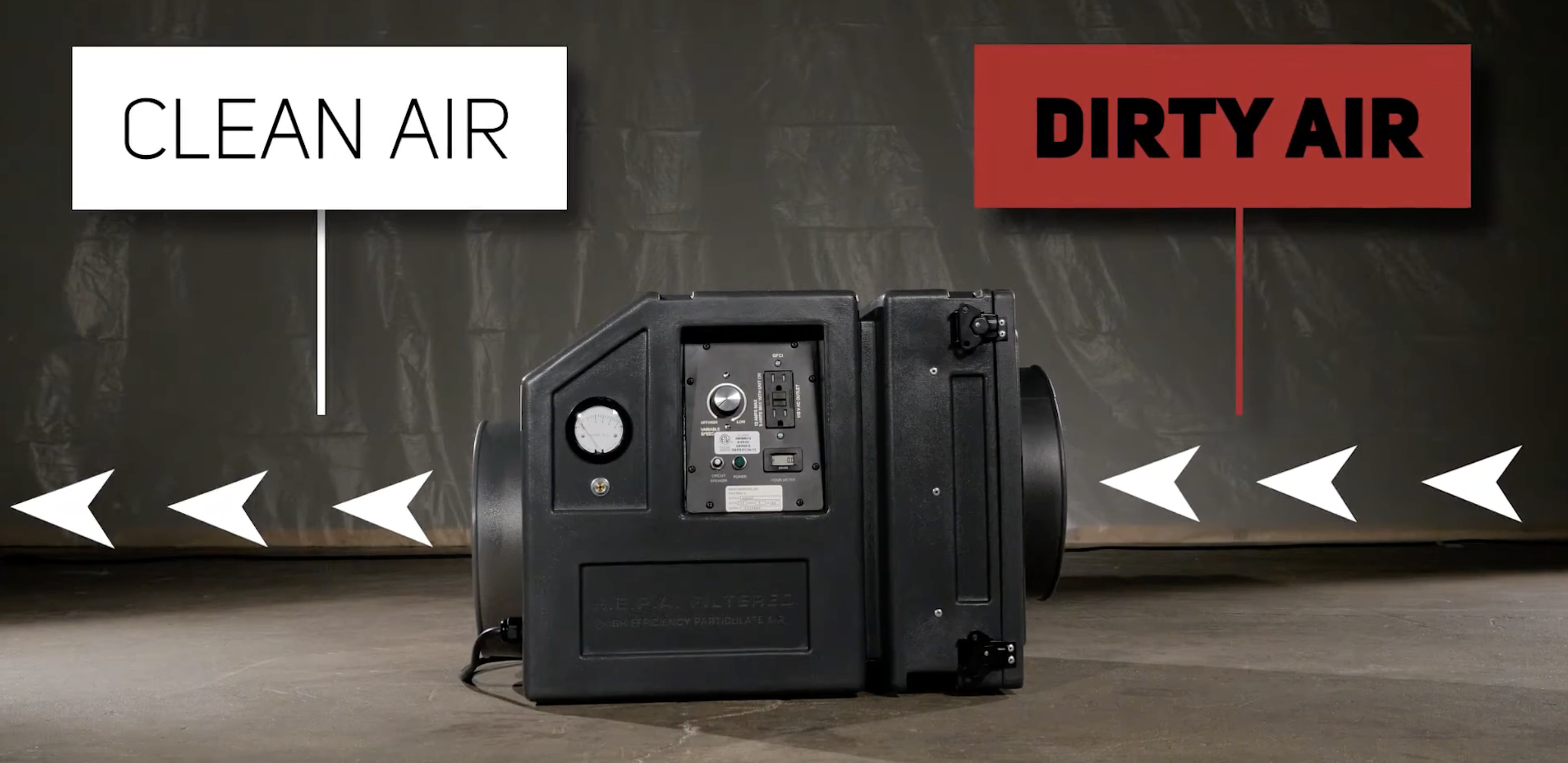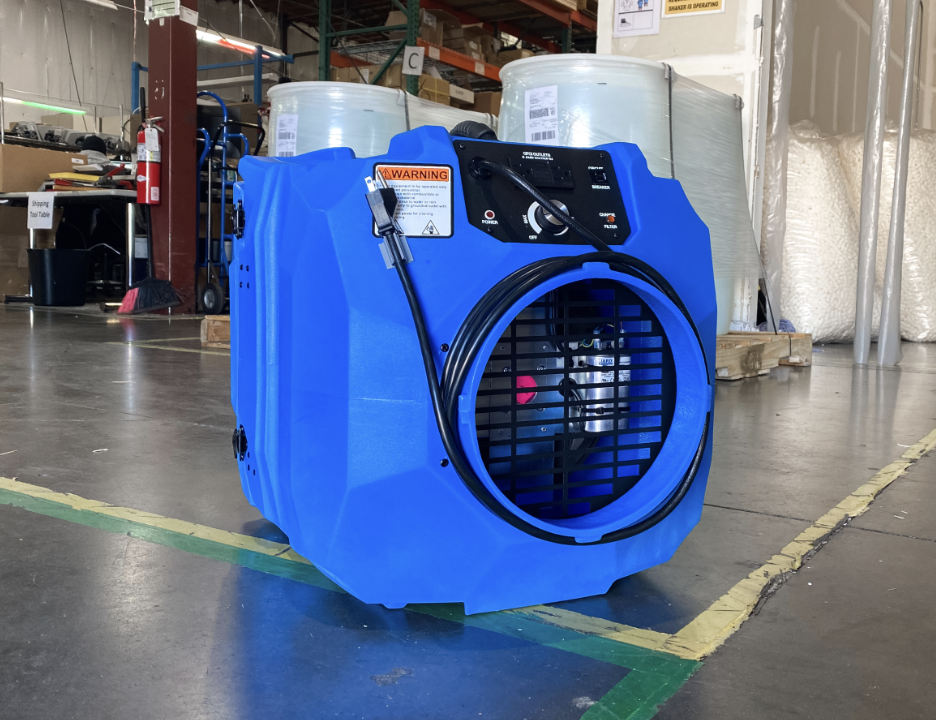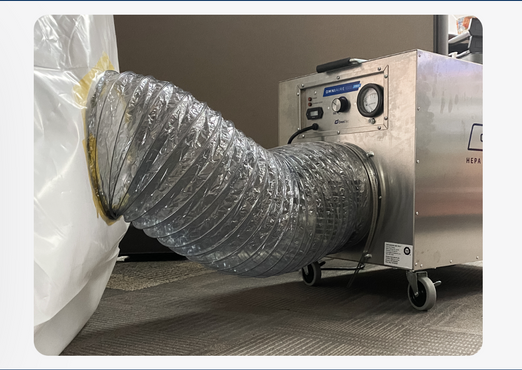Posted by Spycor LLC on Jul 18th 2025

Negative Air Machines, also known as air scrubbers or negative air purifiers, are essential tools for maintaining clean and safe air in various professional settings. These powerful devices create negative pressure to remove harmful airborne contaminants like dust, mold spores, bacteria, and volatile organic compounds (VOCs). Whether you're managing a construction site, remediating mold, or ensuring infection control in a healthcare facility, a negative air machine is your go-to solution for superior air quality. In this article, we’ll explore the key uses of negative air machines and why they’re critical for industries like construction, healthcare, and restoration.
What Is a Negative Air Machine?
A negative air machine is a specialized air filtration system designed to pull contaminated air from a workspace, filter it through high-efficiency particulate air (HEPA) filters, and exhaust clean air outside or back into the environment. By creating negative pressure, these machines prevent harmful particles from escaping the contained area, making them ideal for environments where air quality is critical.
Key Features:
- HEPA Filtration: Captures 99.97%–99.99% of particles as small as 0.3 microns, including dust, mold, and bacteria.
- Variable Airflow: Adjustable CFM (Cubic Feet per Minute) to suit different room sizes and applications.
- Portability: Many models, like the OMNIAIRE OA2000V, are designed for easy transport with caster wheels.
- Compliance: Meets OSHA, CDC, and UL standards for safety and performance.

Top Uses of Negative Air Machines
Negative air machines are versatile tools with applications across multiple industries. Below, we dive into their primary uses, optimized for keywords like "negative air machine for mold remediation" and "negative air machine for construction."
1. Mold Remediation
Mold spores are a health hazard, causing respiratory issues and allergies. Negative air machines are critical for mold remediation projects, as they capture airborne spores and prevent cross-contamination. By creating a negative pressure environment, these machines ensure that mold particles are contained and filtered out using HEPA filters.
- Why It Matters: Mold can spread quickly in damp environments like basements or water-damaged buildings. A negative air machine, such as the OMNIAIRE OA2200UL, ensures safe and effective remediation.
2. Construction Dust Control
Construction and renovation sites generate significant dust, which can harm workers and nearby occupants. Negative air machines, often called HEPA air scrubbers, remove fine dust particles, silica, and other contaminants, ensuring compliance with OSHA regulations.
- Applications: Used in drywall cutting, concrete grinding, and demolition projects.
- Example: Portable units like the Mintie Technologies air scrubber are ideal for small to medium construction sites, offering up to 600 CFM for efficient dust control.
3. Healthcare Infection Control
In hospitals and healthcare facilities, negative air machines are vital for preventing the spread of airborne pathogens. These machines meet CDC guidelines for infection control, particularly in isolation rooms for patients with infectious diseases like tuberculosis or COVID-19. Some models combine HEPA filtration with UVGI (ultraviolet germicidal irradiation) for enhanced pathogen elimination.
-
Use Case: During hospital renovations, negative air machines maintain air quality in compliance with ICRA (Infection Control Risk Assessment) standards.
4. Fire and Smoke Restoration
After a fire, smoke and soot particles linger in the air, posing health risks. Negative air machines with carbon filters remove odors and VOCs, making them essential for fire restoration projects.
-
Benefit: Restores air quality in homes, offices, or commercial spaces post-fire.
5. Clean Rooms and Laboratories
Laboratories and clean rooms require stringent air purity standards. Negative air machines maintain low particulate levels, ensuring safe conditions for sensitive experiments or manufacturing processes.
-
Example: Units like the Abatement Technologies air scrubber are designed for clean room applications.
How to Choose the Right Negative Air
Machine
Selecting the right negative air machine depends on your project’s needs. Use Spycor’s Air Flow Calculator to determine the required CFM based on your containment area and desired Air Changes per Hour (ACH). Here are some tips:
- Small Spaces: Choose portable mini scrubbers (up to 600 CFM) for bathrooms or small offices.
- Large Projects: Opt for high-capacity units (up to 2,100 CFM) for demolition or hospital renovations.
- Specialized Needs: For healthcare or odor control, select models with UVGI or carbon filters.
Benefits of Using Negative Air Machines
- Health and Safety: Protects workers and occupants from harmful airborne particles.
- Regulatory Compliance: Meets OSHA, CDC, and UL standards.
- Versatility: Suitable for diverse industries, from construction to healthcare.
- Cost-Effective: Rental options and durable designs reduce long-term costs.
CLICK HERE to check the best negative air machine based on your needs and ensure clean, safe air for your project.

FAQs About Negative Air Machines
Q: What is a negative air machine used for?
Negative air machines are used to remove airborne contaminants like mold, dust, bacteria, and VOCs in settings such as mold remediation, construction sites, healthcare facilities, fire restoration, and clean rooms.
Q: How does a negative air machine work?
It creates negative pressure by pulling contaminated air through HEPA filters, capturing particles as small as 0.3 microns, and exhausting clean air to prevent contamination spread.
Q: Are negative air machines the same as air purifiers?
While both filter air, negative air machines are designed for industrial and professional use, offering higher CFM and negative pressure for containment, unlike standard home air purifiers.
Q: What industries benefit from negative air machines?
Industries like construction, healthcare, mold remediation, fire restoration, and laboratories rely on negative air machines for air quality and safety.
Q: How do I choose the right negative air machine?
Consider your project size, required CFM, and specific needs (e.g., HEPA, UVGI, or carbon filters). Use Spycor’s Air Flow Calculator for guidance.


